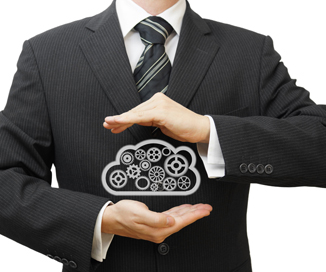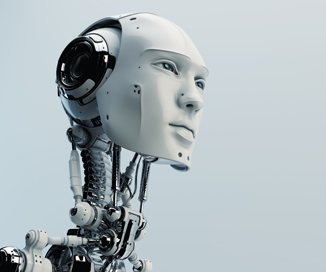We’re not strangers to innovation. It’s no secret that hundreds of new mobile apps are introduced in the Apple app store every day—and every day, consumers download a mere...46 million apps. Our society is not content to watch innovation from the sidelines. Consumers and producers alike chase it down continually, which keeps the wheels of innovation turning. We are more interconnected and curious than ever before.
What does that mean for information technology? We asked six industry experts what they think the IT industry will look like in 50 years. Here are their predictions for the year 2065:
Tom Huntington, Vice President of Technical Services, Fortra
Our industry now is about 50 years old and has gone through many phases, from consolidated to distributed computing to mobile computing. Mobile computing will still be an important topic of the future: everyone worldwide will have wearable if not implanted technologies to supplement what the human brain can hold or create.
In 50 years, connection to the data center and storage of data will be available through biometrics so that information will only be accessible in a more secure fashion. All data that is relevant will be stored in memory and cycled off to more permanent storage as managed service providers evolve to build service centers. This would support IT worldwide by offering corporations storage facilities so that they no longer have to manage their own IT.
In turn, voice searching and instructions will be mainstream for the development of new applications and access of data for business decision making. Though we can do this today, in 50 years, this means that individuals working in IT will be able to build complex business systems without developers: open systems repositories will be able to assemble software solutions with reuse techniques that couple components together without the limitations we face today.
The data center in 50 years will also look different because we simply cannot continue to consume the amount of energy we are using today to grow the appropriate back end. Technologies will have to look for alternate energy sources, like light, so that data centers may follow the sun in a different sense. For example, your data center could function from places like Alaska, Arizona, or Antarctica because during their light cycles, they have nearly 24 hours of daylight.
Finally, in the late 1990s, we spoke about autonomic or self-healing technologies. I believe this concept will be perfected over the next 50 years. For example, a failed component will be able to replace itself without human intervention. Again, the repositories of applications and data will be able to transform to create applications on their own as we see in the cartoon characters of the Transformers.
"The nice thing about technology is that, as solutions evolve, so too will the knowledge needed to support those solutions."
Chuck Losinski, Director of Automation Technology, Fortra

In 50 years, servers will all be located in the cloud and viruses will be a thing of the past. Applications and apps will be hardened, unbreakable, and virus-proof. Apple, Microsoft, and IBM will be long gone—all bought out by the inimitable Amazon. And thus Silicon Valley will no longer be ground zero of innovation. I believe that South America will be the new technology center-point.
Software engineers will be developing using tools and techniques that will convert thought patterns into functional design. And they’ll be monitoring data centers that are no bigger than the size of a broom closet—even for the biggest companies.
Nations will have ultra-high speed wireless networks that are accessible by individuals and companies alike, so there will be no need for internal LANs or WANs. Because of this wireless infrastructure, power consumption will be one-tenth of our current usage.
In 50 years, all of this will be hosted on the Amazon Cloud Server.
Richard Schoen, Director of Document Management Technologies, RJS
When I think about the year 2065, it makes me a little sad because I will be long gone and my children will be approaching middle age, unless, of course, we invent technology to increase lifespan during the next 25 years. As far as IT goes, I am imagining that data centers will be filled with wafer-thin servers all running solid state drives of some sort, allowing tiny servers to store hundreds of terabytes of data.
Every home will also be equipped with its own small server, which would allow personal data to be stored easily and for video and audio to be streamed quickly throughout the house. Internet speed will be faster than 10 GB, which would result in data centers and home users being able to easily replicate information to high speed data banks in order to back up and keep all of their information safe.
As far as mobile devices go, the same speed and availability will continue to make useful mobile computing a reality. This won’t be much different than our mobile capacity today: only faster and stronger.
Skilled IT workers and business analysts will still be in high demand to keep applications and data centers up and running. For those of us in IT, life is good. Now about that life-lengthening technology…
Mike Stegeman, Senior Data Access Consultant, SEQUEL
In 2065, companies will no longer need their own computer hardware. The internet and cloud computing (sharing of resources) will allow small or large companies to use the same processing speed and power. In turn, application software will be more uniform, which would allow for said hardware to be better utilized.
The number of software applications available will decrease because of their uniformity. Hardware, databases, and interfaces will not matter because of the faster and easier communication between systems. Because user interfaces will not matter, voice activated systems will be quite prevalent. In addition to environmental controls, transportation, and interpersonal communication, computers will respond to human voices.
So how will these predictions affect the IT departments of individual companies?
Since companies will have only devices to connect to the cloud, the IT hardware maintenance will be drastically reduced if not gone completely because only devices will need to be maintained.
The types of offices we know in 2015 will no longer exist because remote processing will take on its true meaning. It won’t matter where you are as long as you can connect to the internet and your ‘cloud’ processor—you’ll be able to do your work. However, because of the human desire to interact with others, there will be common meeting areas available to conduct business and exchange ideas freely.
Within an organization, information sharing will be commonplace. The more data is shared, the more likely trends or issues will be exposed. This is beginning to happen in 2015, but it will be seamless and expected in 2065.
Finally, I believe that the Global Universal Standards will have decided on one database, one operating system for all businesses, universities, and governments. This will make the sharing of data simpler. Shared databases will be able to detect attempts to defraud or ‘skirt’ laws. Having one system will make organizations far more efficient.
Kevin Jackson, Technical Solutions Consultant, InterMapper

If Hollywood had its way, IT would look like a scene out of iRobot, where man and artificial intelligence will merge. But I’m not sure I’m ready for a computer bringing me my breakfast. If history repeats itself, we will start to see the size of devices getting more compact, but becoming more proficient.
Today, we walk around with handheld computers that are capable of controlling security systems or supporting network infrastructure. In 50 years, I think IT will have evolved into a self-sustaining entity where human intervention will be limited. I foresee many more businesses looking to offload their technology to managed service providers just so they don’t have to deal with the day to day task of maintaining technology.
Technology is much more scalable now than it ever was with the evolution of virtualization, which bodes well for data centers. Data centers will not be able to maximize their space while minimizing their hardware footprint. The nice thing about where IT is going is that the fierce competition between vendors will only benefit the consumer. Hardware vendors are battling to see who can provide the most efficient and powerful systems while software vendors are looking to provide the most robust, hands-off, and stable platforms.
In an ideal world, computers would run perfectly, but they don’t—so there will always be a need for IT professionals manning the battle stations. In 50 years, I think IT-related jobs will still be around, but the required skillset will be different. The nice thing about technology is that, as solutions evolve, so too will the knowledge needed to support those solutions. That said, there will be some attrition when it comes to IT-related jobs, and that’s just a generational factor. If IT moves too quickly, certain generations might not have the time or patience to accept these changes, which would be problematic for the industry. There must be a balance between improved technology and the knowledge to sustain and drive that technology.
Pat Cameron, Director of Automation Technology, Automate
In 50 years, consumer electronics will be crazy! We'll probably all have chips in our heads and, when we wish we had something, Amazon will drop it at our front door. But how will Amazon process that order and report on it? That's the piece that may not change much.
Companies will still need to manage the yottabytes of information that they will have. They'll need to process all of that information for whatever service or product they provide. They'll need to report to their shareholders on their profitability.
If you look at the past 50 years of IT, there really hasn't been much change in those back-end processes. Yes, computers are faster and smaller and they use more data from more sources, but the core of IT is about the same as it was 50 years ago. IT typically goes through stages of distributed processing then centralized processing, and it will go through those evolutions again. I see the biggest change in where that hardware resides. Cloud and fabric and virtual computing will be the norm. No company will invest in hardware that changes so quickly that they lose their initial investment. The Googles and IBMs and Amazons of the world will, no doubt, control the hardware but, in my humble opinion, batch-type processing will still be the core of most businesses.
The Round-Up
Far from visions of robots and flying saucers, these industry experts share very similar and realistic predictions for the future of their industry. Here are some things to keep an eye out for as the industry continues to evolve:
-
Data centers will shrink as servers become more compact and efficient.
-
Energy consumption of information technology will be a topic of increasing importance.
-
Managed service providers will gain more influence for businesses.
-
Choices between databases and applications will become increasing uniform.
For more from these experts, check out their perspectives on IT outages in this article.
One thing's for sure: automation is as important as ever in 2015. If you're interested in beginning to automate your enterprise or expanding your automation capabilities, check out Automate Schedule, the platform-agnostic and application-agnostic enterprise job scheduler.



